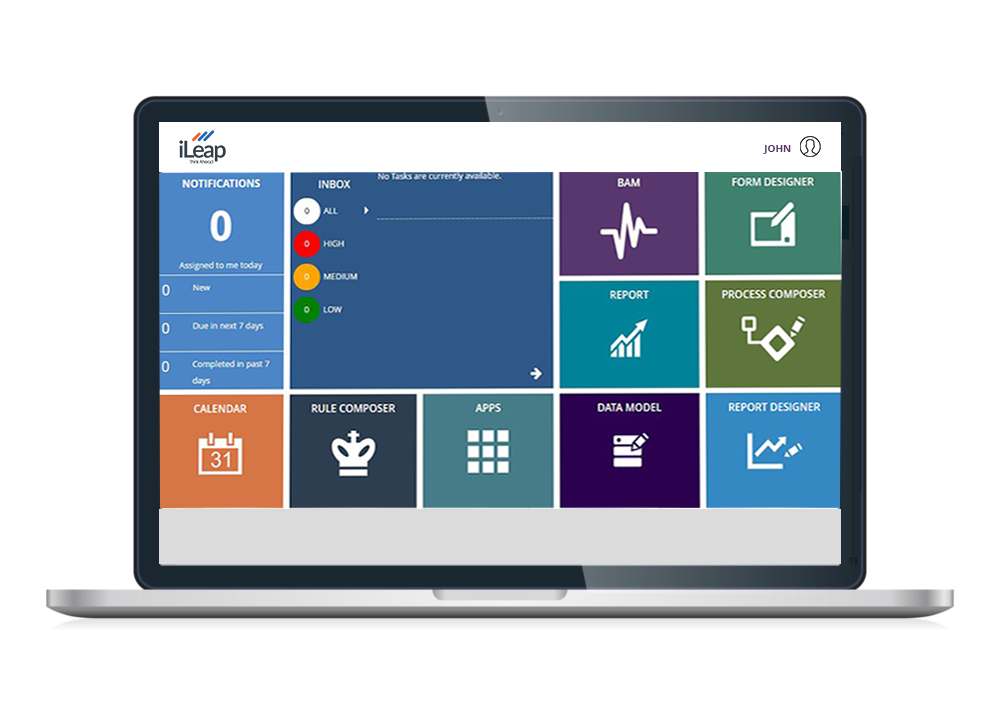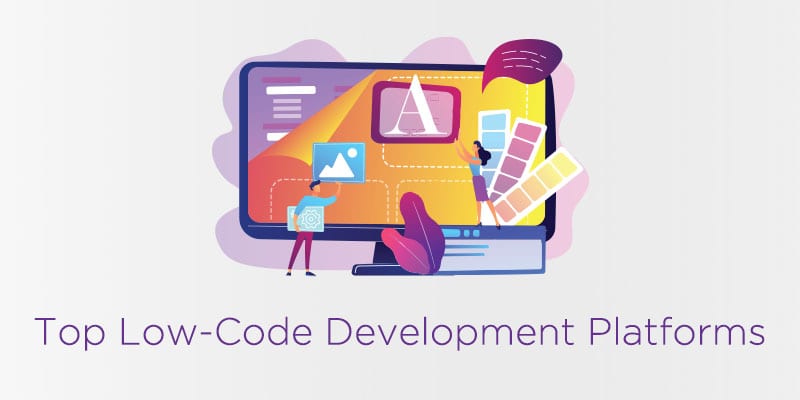Great News To Selecting Low-Code Platform Recommendations
Wiki Article
The Benefits Of Low-Code Development For Non-Developers With Regard To Accessibility
The following factors are key to making low-code development accessible to non-developers.
Drag-and-Drop Builders: Low-code systems offer drag-and–drop interfaces which enable people who are not developers, and without the need to write code, to create visually-based applications. This makes the development process more accessible to those without technical background.
WYSIWYG Editors: "What You See Is What You Receive" editors let users build interfaces and workflows a manner that closely resembles the actual product, which makes it simpler to understand and use.
Simple Logic and Workflow:
Visual Workflow Modeling: Users are able to design business processes and application logic through visual flowcharts and models, which are more user-friendly than the traditional methods of coding.
Pre-built Components of Logic Low-code platform often includes pre-built logic (e.g. loops or conditional statements) which can be easily configured, reducing a need for complex programming.
Reusable Templates and Components
Template libraries that are pre-built: Numerous low-code platforms have an application library that can be used for the most common types of applications, allowing those who are not developers a base to build upon and then alter.
Reusable widgets and modules The creation of web pages is made simpler by using reusable components as well as modules. This reduces the need for deep technical knowledge.
Guided Development and Tutorials
Step-by-Step Guides: Platforms typically provide a development path with guidance, online tutorials, or screen-based instructions that can assist those who are not developers in developing applications.
Interactive Tutorials. Interactive, hands-on tutorials let users learn through doing.
Integration with existing tools:
seamless integration: Low-code platforms are designed to integrate seamlessly with existing business tools, systems as well as software (e.g., ERP or CRM). This allows non-developers who don't have a prior experience in programming to design applications that can work seamlessly with their current workflows.
APIs Connectors: APIs integrate into applications to make integration easier. This allows non-developers, with no programming skills, to connect with external services.
Collaboration Features:
Team Collaboration Features, like real-time collaboration as well as shared workspaces, enable professionals and non-developers to collaborate effectively.
Access Control Based on Roles: Developers who are not developers are able to have access to roles and levels of access that allow their participation without compromising functionality or security.
Automated Testing and Debugging
Low-code platforms have tools for testing and debugging that are built-in. They automate this process, making it easier for nondevelopers to make sure their apps work.
Error highlighting: The platform points out problems and offers solutions to help non-developers.
Overall, the benefit of low-code application development for accessibility to non-developers lies in its ability to democratize the development process. With its intuitive, visually-focused tools and guided experiences, low-code platforms enable business users to actively participate in creating and maintaining applications, bridging the gap between business requirements and technical implementation. See the top rated more help for Low-code Platform for application development for blog advice including low code development platforms, app platforms, developing mobile apps, mobile development platforms, app platforms, push notifications, mobile app development platforms, microsoft azure sql, rapid action development, rapid application design and more.

Advantages Of Low Code Application Development For Governance And Security
Low-code development offers many benefits regarding security and governance. They are essential to ensure that applications are secure, compliant and properly managed throughout their lifecycle. Here are some of the major benefits:
Unified management console Low-code platforms typically provide a centralized administration console from which administrators can manage all applications and maintain a consistent governance within the organization.
Role-Based Access Control RBAC (RBAC). These systems typically provide robust access control based on roles, allowing administrators to establish and implement their own access policies. This ensures only authorized users are able to access or modify specific parts of an application.
Compliance and Regulatory Application:
Conformity features: A lot of platforms that make use of low-code are built to conform to industry standards. They provide templates and tools to ensure that their applications comply with these regulations.
Audit Trails and Logging: Audit trails, comprehensive logging, and logs are often integrated into companies, allowing them to track changes and monitor access. They can also verify compliance with internal and outside laws.
Increased Security Measures
Data encryption. Low code platforms usually have built-in encryption for data during transport and when in rest. This helps protect sensitive information.
Security Certifications A lot of low-code vendors have security certifications (e.g. ISO 27001, SOC 2 ) that demonstrate the compliance with security standards of high quality. This adds additional confidence for the customers.
Automated Security Updates
Regular updates and patches: Low code platforms are typically capable of handling security patches and updates on a regular basis. This ensures that applications remain safe from the latest threats, without developers having to manually intervene.
Security Monitoring Tools: These tools send alerts in real-time and insight into potential security problems.
Data Governance
Data Access Policies: These systems enable companies to establish and enforce policies on data access to ensure that data access is restricted only to those who have been granted access and is properly used.
Data Masking, Anonymization and Anonymization Tools: These tools assist to safeguard sensitive personal data and are especially useful in test environments.
Consistent Application Management:
Development and Deployment Pipelines Low-code platforms typically offer integrated deployment and development pipelines that incorporate security checks, which ensure security is maintained throughout the entire application lifecycle.
Version Control - Integrated version controls helps monitor modifications to applications, and permits the application to be reversed in the event of need. They also help maintain the integrity and quality of the application.
Authorization and User Authentication:
Single Sign-On (SSO). Support for advanced authentication and single sign-on simplifies and increases security.
Multi-Factor Authentication Numerous platforms can support multi-factor Authentication that adds an additional layer of security when accessing apps.
Policy Enforcement and Compliance Monitoring:
Low-code platforms usually come with pre-defined policies templates that enable organizations to implement cybersecurity and governance policies quickly.
Compliance Monitoring Tools - These instruments allow for continuous checking of compliance status, and also provide the ability to report, making it easier to spot and fix potential issues.
Integration with Existing Security Infrastructure
Seamless Integration: Low-code platforms are designed to integrate seamlessly with the existing security infrastructure and tools, such as identity management solutions and SIEMs (Security Information and Event Management Solutions), and firewalls.
API Security: Built-in API security features safeguard data, maintain application integrity and secure integrations.
Best practices and training:
Good practices: Several platforms provide guidelines for developing secure applications and provide the best practices. This can help non-developers follow security standards.
Security Training Some low code service providers provide security tools and training for users in order to help them understand how to build and maintain secure applications.
Overall the security and governance advantages of low-code application development assure that the applications are developed and operated in a secure and compliant method. These platforms have the frameworks and tools necessary to protect sensitive information as well as enforce policies and ensure regulatory compliance while simplifying management and oversight. Have a look at the most popular more help about Enterprise application development with Low-code Platform for blog examples including developing mobile apps, cloud software applications, database in azure, sso azure, app dev platform, stored sql procedures, mobile app development platforms, driver jdbc, software for app development, cross platform mobile development and more.

The Benefits Of Low-Code Development For Developing Applications, In Terms Of The Limitations And The Possibility Of Customization
Low-code development is an approach that is balanced and offers important advantages in terms of addressing limitations and allowing for customisation. Here are some of the key advantages.
Overcoming Complexity Barriers
Low-code platforms facilitate development by providing templates that are pre-built and components. This facilitates rapid deployment and the development of more complex applications.
Numerous platforms offer wizards and guided workflows to assist developers in navigating complicated processes. These tools decrease the chances of errors, and help ensure uniformity.
Scalability Solutions
Scalability built-in Lowcode platforms typically include features that enable an scalable architecture. They allow applications to cope with increasing demands without requiring major overhauls.
Performance Monitoring: Integrated performance monitoring tools and optimization tools ensure that applications are as efficient as they can be, no matter their size.
Security and Compliance
Integrated security features of Low-code come with built-in measures of security, such as encryption. Access control based on role and automated compliance check, addressing the most common security issues.
Regular updates: Platforms often update their security protocols and security measures to ensure that applications are protected against the latest threats.
Customization:
Extensibility:
Low-code Platforms Allow Custom Code: These platforms allow for the integration and the use of customized code.
Custom Modules and Plugins: Developers can have the option to create customized modules or plugins to customize specific functionality to fit unique business needs.
APIs & Integration:
API Support - Comprehensive API support permits seamless integration with external systems and services and allows for complete customization.
Third-Party Applications Lowcode platforms are usually pre-built with connectors for third-party applications. This makes it easier to integrate them and customize the application.
Flexible UI/UX Design:
Customizable User Interfaces: Developers have the ability to modify and design user interfaces that meet specific design and usability specifications giving users a personalized experience.
Responsive design: The capability to adapt applications to different screen sizes and devices is built-in.
Business Logic Customization:
Visual Workflow builders: These tools allow developers build complex processes with minimal or no programming. They can design workflows and business logic visually.
Conditional Logic and scripting: Platforms allow the use of conditional logic as well as custom scripting to handle specific business rules and scenarios.
Data Management:
Custom Data Models: Developers have the ability to create custom data models that meet the specific requirements of an application and ensure that data handling complies with business needs.
Advanced Data Processing: Integration with advanced tools and capabilities for data processing allows customization in how the data is analyzed, and utilized in your application.
Customisation and balancing limits:
Frameworks and Standards
Best Practices in Compliance: Low-code platforms encourage the use of industry-leading practices and standards. This assists in maintaining high-quality scalable, and secure applications.
Governance Frameworks. Built in governance frameworks can help to ensure that modifications aren't harmful to the security, integrity or security of the application.
Iterative development and feedback:
Rapid prototyping: The capability to quickly prototype and test modifications allows developers to modify their designs based on feedback from users improving the app to better meet user needs.
Continuous Improvement: Low-code systems allow continuous improvement, allowing for ongoing customization and enhancement as the business needs change.
Empowering Users:
Empowering Citizen developers: Low-code interfaces that are intuitive allow non-developers to create customisations. This can increase the number of users who are able to modify and improve applications.
Support and training: A lot of platforms offer extensive training materials as well as support services to help users in making modifications which are efficient without affecting the performance or stability.
Overall, low code application development offers a solid framework that can address the limitations and provide ample possibilities for customization. This ensures that companies are able to create and maintain apps that function and are specifically tailored to their requirements, while also maintaining high standards of quality, security and scaling.
